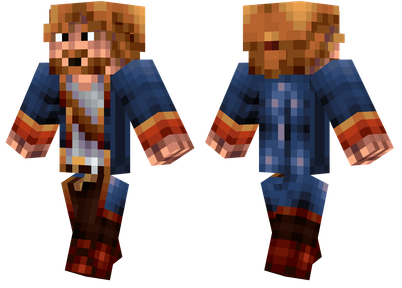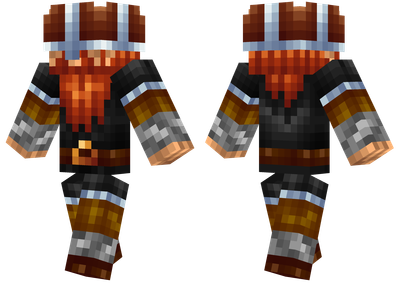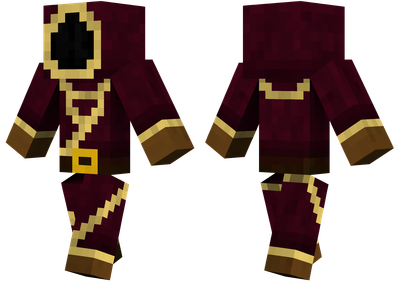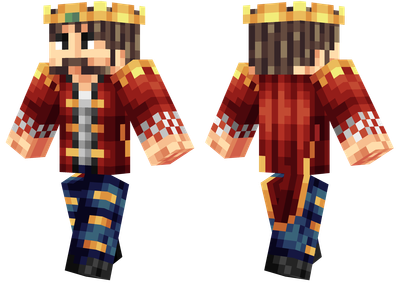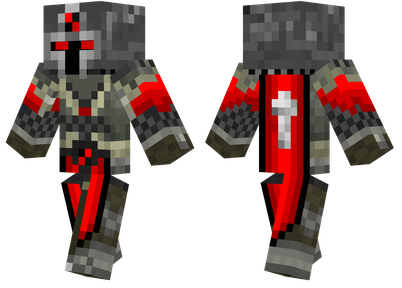This tutorial is set by the author's setting without permission.
1.12.2qmd ultra -detailed tutorial
Version: QMD V1.0.4 (may be outdated)
Table of contents:
1. Foreword
2. particle pile
3. Accelerator
4. Target room
5. reducer
6. collision room
7. Controller
8. Dechat chamber
9. Beacon steeringrs
10. Beaming collector
ps:
1. The particle pile is referred to as particles for short, and the meaning is basically the same.
2. All machine redstone signal strength will affect its efficiency. The higher the redstone signal, the higher the efficiency (so I suggest that you can do a lever).
3. Unit conversion: 1g = 1000m, 1m = 1000K, 1K = 1000.
4. Part of the picture in the tutorial comes from wiki.
5. For this tutorial refer to Wiki, please see wiki for more detailed tutorials.
1. Foreword
This module is called quantum block dynamics (referred to as QMD). QMD is based on reality and high -energy particle physics as a reference to allow you to learn physics in MC.This teaching is easy to understand the deep physics (you can show off to others).
2. particle pile
The particle pile is the most basic thing in this module. The particle pile contains a certain amount of particles. Click on the corresponding particle Jei. You will see the particle information of the particles, but the particle quality and the charge are basically useless (the quality of the particles is used to calculate the calculationParticle energy and charge are used to calculate the focal length of the particles, which will be mentioned in the accelerator sector).The most important thing is the three information displayed when you move the mouse to the particle heap: quantity, energy, focal length.
quantity
As the name implies, the number of particles contained in the particles pile is PU, which means that the number of particles generated per TICK, but the number of particles required in some synthesis, such as 1000PU and the number of this particle pile is 100pu, the synthesis requires 10tick 10tick that requires 10tick 10tick.Essence
energy
Energy represents the energy of the particle heap now, the unit is EV.You can increase energy by accelerator and reduce energy.Many synthesis requires large energy, and our accelerator is needed at this time.
focal length
The focal length indicates that the particles can travel, and the particles need to be transferred to transfer. The focusing distance is lost by 0.04 in each front of the bundle (the mouse can be moved to the beam pipe).Can't move forward.The focal length of each particle is fixed, and the tetrack magnets in the accelerator can be increased (it will be mentioned later).
3. Accelerator
Accelerator is a multi -square machine that improves the energy of the particle. It is divided into linear accelerators and synchronous accelerators (linear is a line, synchronization is a circle).The basic frame is shown in the figure:
5 -square -wide, 5 square meters, unlimited length, transparent shell and opaque shell, transparent shells are convenient to observe the interior.
Linear accelerator
Linear accelerator is to block the above frame (unlimited length) on both sides (it is recommended to not be capped at the beginning, which is convenient to modify the internal structure). Put a accelerator beam port at the end and one end of the accelerator ion source.As shown in the figure:
The accelerator beam flow port (basically all ports can be) can be adjusted by multi -functional tool adjustment mode of nuclear power.
Then it is to create a bundle stream cube crossing the middle:
Then put the upper -line accelerator controller, the two accelerator coolant is out of the entrance (adjusted to an output of an input), and a accelerator energy port, as shown in the figure
Energy port input energy, the coolant input port input the coolant, you can see the available coolant by viewing the Jei of the controller. The controller needs to be driven by redstone.This is the most basic structure of the accelerator. At this time, the UI of the controller can be opened, but such an accelerator is just an empty shell. In order to accelerate the particles we need, we also need to add things inside.
Coolant
Cooling is a liquid for the cooling of the accelerator. Taking the liquid cricket as an example, the temperature of the liquid is 4K. It means that if your accelerator enters the temperature where the coolant can cool toIt will be overheated, and the maximum temperature of the accelerator is the minimum value of the maximum operating temperature of all components (can be viewed in JEI).If you have a maximum operating temperature of a radio frequency cavity of 350K and the other is 10K, your machine must run at 10K temperature, otherwise the original 10K will be blown up and the explosion range is small.The maximum temperature will be displayed in the UI of the acceleration controller, and the UI introduction sector will be mentioned.
Radio frequency
As shown in the figure, the same eight radio frequency blocks surround the beam stream block
The radio frequency can improve the accelerator's acceleration voltage (which can be understood as increasing particle speed) to increase particle energy.The two radio frequency cavities are at least one square, and the different acceleration voltage of the radio frequency material is also different. Please see JEI for details.
Tetra
As shown in the figure, the 4 same magnets are surrounded by the bundle cubes
The tetrack magnet is used to improve the focal length of the particles and prevent the particle distance from insufficient particle distances and cause the machine to stop running. The strength is also determined by the material.
Cooler
The old gadgets of nuclear power technology should be very familiar, but the difference between this and nuclear power is that the cooler of QMD is used to consume the coolant. It must not only be input of cooler and coolant.Different coolers need to meet certain conditions to run, which can be viewed in JEI.
Ion
Ion source is a method for providing particles for accelerators.The imported items can be generated in the accelerator. The items can be used to see the ion source JEI. The placement of the ion source must be red facing outside. You can use a pipe to enter items to it.Cooling out of the entrance) to achieve automated supply raw materials.One can last for 300 seconds.
Linear acceleration controller UI
This is what is running normally.When the accelerator is just started, there will be a certain temperature (300K) without care. After startup, the coolant will be consumed and the accelerator can be reached the same temperature as the coolant, and then running.The length of the UI is the width of the accelerator.In the first line of radio frequency, there are several effective radio frequency cavities in the accelerator, and the second represents the sum of the voltage acceleration voltage of the radio frequency.The first line of the four poles of the line of the second line represents the number of tetrack magnets that are effective, and the second line represents the total magnet strength.The third line indicates that the speed of the accelerator is now.The highest temperature of the fourth line indicates that the temperature of the accelerator cannot exceed this temperature (note: the temperature of the accelerator is not equal to calories but proportional to the calories).
The first grid on the left is the energy bar, and the first line indicates the current energy storage and energy limit.The second line represents the energy required.At this stage, there should be no shortage of electricity, and the energy you need can be careless.If you really want to calculate the energy requirements, prepare a pen and paper or calculator. The formula is: p = p/ε, P is the energy required, P is the basic power of your internal components (that is, you are you射频腔和磁铁需要的基础功率总和,可以通过jei查看,显示的为一整个射频腔或磁铁的能量,经实测其实射频腔需要的电量是jei显示的一半,电磁铁则没有问题,莫名其妙),ε is the average power efficiency of all components (the power efficiency is also viewed by JEI).The contents of the parentheses behind are the ratio of the total energy to the total energy of the component, that is, 1/ε (p/p).Example: There are 3 copper ejaculation cavities in my accelerator (power efficiency is 50%, and the basic power is 2000), 1 titanium alloy radio frequency (95%, 1600), and a tin titan tetron electromagnet (90%90%(90%), 4000) then P = 1000*3+8000+4000 = 15000, ε = (3*50%+95%+90%)/(3+1+1) = 335%/5 = 67%, so P/ε = 22.388krf/T.
The second grid is heat storage. The first act is now calorie.The second behavior cooling means that the total cooling amount of all your coolers.The third act is the sum of the heat output of all components.The fourth behavior is the largest external heating, and the value is too small.Be sure to ensure that the cooling is greater than the two below.
The third grid is storage of coolant. The first act of the internal coolant is stored in the first act.The second behavior coolant consumption, all coolant defaults to 1MB by 1 000h (as shown in the figure below). As mentioned earlier, the cooler is actually used to consume the coolant, so the consumption of the coolant is 1000 in the cooling in the previous one.The output speed of the third act of hot coolant.
Finally, particle information.The meaning of various items has been introduced earlier. This is the particle information of the time when output from the accelerator beam flow port.
Particle energy is the most important (if you don't want to count more/less radio frequency, or use higher/low -level) formulas: particle energy E = E 0 +| q | v, of whichE 0 is the initial energy (if the particles of this linear accelerator are provided by ion source to provide E 0 , it is 0. If it is imported by other accelerators, e 0 It is the particle energy output by the previous accelerator); Q is a particle charge, which can be queried at the Jei particle information interface; V is the sum of the acceleration voltage of all radio frequency.
The second is the focal length (if you don't want to count more/less four-pole magnet, or use higher/low-level) formulas: focusing F = F 0 -αl+| q | q |B q , where F 0 is focused on the input beam flow (the initial focus of the bundle flow generated by the ion source is generally 0.2, which can be viewed in the formula); α is the focal length of each grid.The amount of reduction (generally 0.04); L is the length of the accelerator; Q is particle charge; B q is the sum of the strength of all tetramid magnets in the accelerator.
We cannot satisfy the particle energy increased by linear acceleration.
Synchronous accelerator
In fact, the initial shell structure is surrounded into a circle, as shown in the figure as shown in the air synchronization accelerator
A synchronous accelerator controller is needed, two accelerator coolant is out of the mouth (one in one and one out), one accelerator energy interface, and two beam flow ports (one in one and one out).The internal of the synchronization accelerator contains four components: bipolar magnets, tetrack magnets, radio frequency, cooler.The bipolar magnets are unique to synchronous accelerators, and others are the same as the linear accelerator.Each corner must have a bipolar magnet, and the following:
Suppose this is a corner
We need to put an electromagnet each of the outside and bottom of the outside.
Then fill the accelerator electromagnetic 轭 with an air in the area around 3*3*3.
Let each corner at each corner just have such a structure.
You only need to replace the electromagnetic pupa with an accelerator beam square block in the corner of the corner to connect to the beam flow interface.
Note: 1. In this structure of the bipolar magnets, only electromagnetic crickets, bundle flow cubes and electromagnets are allowed.
2. The corner of the inner frame is hollow, as shown in the figure below (the top is still supplemented, just disassemble the observation).
3. The particles of the synchronization accelerator can only be imported by other accelerators and cannot be generated by ion source.
4. The particle energy must be greater than 5MEV when the particle input of the synchronization accelerator (if the particles of your linear accelerator do not come from the ion source, it also needs to be greater than 5MEV), otherwise the particle energy will be displayed too low.
5. The energy input of the synchronous accelerator has an upper limit, depending on its bipolar magnet strength, the higher the strength of the bipolar magnet, the higher the limit.The formula is: e f = (qb d r)
Synchronous accelerator UI
Synchronous accelerator UI is similar to the linear accelerator UI. The same value means the same value, but the radius and bipolar magnets are added.The radius refers to the radius of the bundle flow pipe.The value of the bipolar magnets can be analogized with quadal magnets, which means the same.
Particle energy
The particle energy algorithm of the synchronization accelerator is not the same, more complicated, the formula is as follows: e = min> And e r , so it is useless to be small and the other.
The maximum energy (unit: GEV) E f = (q*b D *R)) Among them, Q is particle charge, B D is the sum of the strength of the bipolar magnet, R is the radius of the synchronous accelerator, and M is the quality of the particles (Jei query particle information).This is very important for large -quality particles (such as proton). Try to put binocon magnets as much as possible.
The maximum energy (unit: GEV) affected by radiation loss is e R = m (3VR/| Q |) 0.25 , where V is the acceleration voltage and acceleration voltage of the accelerator's radio frequency cavity and the acceleration voltage and the acceleration voltage and the acceleration voltage and(Unit: KV).
This one with less quality (such as electrons) is very important, as much as possible to radiate the frequency.
The calculation of focal length is the same as before.
Particle transfer
At this time, we have a linear accelerator and a synchronous accelerator, so how to transfer the particles between the accelerator?Our beam port is actually the input and output interface of the particles. The bundle -flow interface is connected with a bundle flow pipe, but the bouquet flow pipe cannot be turned at will. Therefore, it is recommended to build the same height and the port is opposite.If you really want to turn your steering, you can see the bundle steer section.
4. Target room
The accelerator can only improve the energy of the particles without changing the particles, but many synthesis requires a variety of particles that cannot be produced by the ion source. At this time, we need a way to produce a new particle, one of which is the target room.
put up
As shown in the target room of empty, the construction of the target room consists of a hollow square composed of a particle shell. The edge length can be 3 ~ 9 grid (it is recommended that the strange number side length and the number is not tested). The target room requires a target room control area, 2 to 4 bundle -flow ports, one energy port, two particle chamber items interfaces, a particle chamber, and a particle room beam square block.
The particle chamber must be placed in the center of the target chamber. The bundle flow port is placed at the same height as the particle chamber. There is only one input mode beam flow port. Others must be output mode.Connect the beam flow port and particle chamber with a granular cubes.The placement of the other block is the same as the accelerator, and the object port can achieve automated input output (you can also open the target room UI directly).
detector
The detector can be used to improve the energy and items of the target room. Each detector has certain restrictions and energy consumption. You can view the detailed information of Jei. What you must write on the Jei must be placed in the first place.With so many squares, there are some problems written here.Simply put, use different detectors to wrap the particle chamber in a circle and one circle (pictured).
Target room UI
The figure below is the target room for normal work:
You can see the input particles, output particles, object conversion progress, energy and efficiency (the sum of all detection efficiency) through the target room UI.Target room synthesis
Synthetic magnesium-26 as an example:
Scope: The range indicates that the input particle energy must be within this range, which requires us to use an accelerator or a reducer for accurate control.
Display section: used to calculate the number of output particles.
Energy release: It is used to calculate the energy of the output particles.
The quantity in Figure 2 represents the number of particles required for a synthesis. The synthesis time is to remove the number of particles you entered (unit: tick) with this amount.
Output particle energy calculation: The formula is very simple: the output energy is e = (e 0 +q)/n, where e 0 is the energy of the input particles, Q is the energy release of energy release, N is the sum of the number of particles in the formula (the number of output particles in the output particles is 3 plus 3, adding the number of all output particles together).For example, the above figure is that the energy I entered is 32.43MEV, the energy release is -18.8MEV, and the number is 3.Then E is equal to (32.43-18.8) /3=4.543MEV.
Calculation of the number of output particles: Formula: A OUT = A in Aς, wherein A in is the number of input particles; A is written in the formula.The number of bright particles; σ = min (ση, 1), where σ is the scattering section of the formula, and η is the effectiveness of the target room.Example: A in is 100, A is 3, σ is 10%, and η is 950%. Then σ = min (0.1*9.5,1) = 0.95; A Out = 100*3*0.95 = 285pu.But if your target room is more than 1000%or more, σ = 300pu.So the higher the performance of the target room, the better.
Output
The output of the target room is based on the output of the top particle in the input streaming port.The output of the target room can be adjusted with multifunctional tools Shift+right -click. The top of the UI is the port No. 1, the middle port is 2, and the lower port is the No. 3.
5. reducer
Sometimes the energy output is high, which exceeds the upper limit of our synthetic energy demand. At this time, we need to reduce the energy to reduce particle energy.This is especially useful when generating electrical neutral antimatter.
put up
The construction of the reducer is basically the same as the synchronous accelerator. In fact, the synchronous accelerator controller can be replaced with a reducer controller.But note that there can only be one effective radio frequency cavity in the reducer, and the excess will only consume more power without any effect.
Holder energy limit
The energy input of the reducer also has an upper limit, and the calculation method is the same as the upper limit of the energy of the synchronous accelerator.
Output particle energy
The energy of the overturor output particles depends on the redstone energy received by the controller. The higher the energy of the red stone, the greater the degree of deceleration. When the energy of the red stone is full, the output energy is close to 0.The reducer will make the particles get the energy of e = E f (1-S R /15)., E f is the maximum particle energy of the reducer (the calculation method is the same as the E F in the synchronization accelerator).
6. collision room
The collision chamber is another way to generate new particles through the collision of the particles.
put up
The collision room must be a 17 -square -length cubic body, with a length of 3 ~ 15 (in fact, there are no benefits of more than 11 grids).
In the middle is a long strip composed of a particle chamber. The bundle flow port at both ends must be the input mode. The two ends from the left and right shells The two -composed particle bundle flow port with the output mode must be available.A collision room controller and a particle room energy interface are also needed.
detector
The establishment of the detector in the collision room is the same as the target room, as shown below:
Collision room UI
There are some information in the input particles in JEI: quantity, energy, focal length.The energy and focal length of input particles can start working when marked on Jei
The collision room of normal work
Output
The output of the collision room is interesting
As shown in the collision chamber of the top, first set a positive direction. The positive direction is to walk along the long side of the collision chamber towards this direction, and the X or Z axis will increase.After confirming the positive direction, the 1,2,3,4 cells in the UI correspond to 1,2,3,4 in the figure, respectively.If you want to change the output corresponding to the output, it is still a multi -functional tool Shift+right -click output interface, and the interface will be exchanged with it clockwise to the next output interface.For example, if you adjust 1, the order will change from 1,2,3,4 to 2,1,3,4; then adjust 1 to 2,3,1,4.In this way, you can output the particles you want through a series of operations.
7. Controller
Electrical neutral strange substance curbers are necessary structures to produce and store antimatter
put up
The containor is a cube composed of a curved case with 7*7*7 or 9*9*9.The bottom surface and the top have a circle of alien shells.There must be a curved stream port or laser in the center of each face. Each of each of them must be relatively placed in the same block.
In addition, the containor also needs a curb controller, two coolant out of the entrance, and the two curved items interfaces (not required, as long as you are not having troublesome hands).
The two types of settings are shown in the figure below:
operate
The operation is similar to the accelerator, but it is necessary to ensure the energy supply, cooling and structural integrity of the containor!When there is an antimatter, a disaster explosion will occur when it is destroyed. The explosion will destroy a large area of blocks and release fatal radiation to kill the creatures within a large range.
Input low -energy particles from the curl beam flow port can generate substances, and synthesis can be viewed in JEI.The energy of the input particles must be within the range of the Jei display. The focal length must be greater than the display of Jei, and the quantity is not limited.
Output
The anti -substance output of the curb can be stored by putting a short unit in the lower grid in the containor UI, and it can be automated with an object interface.
Anti -hydrogen production
What you have learned above can already create anti -hydrogen. The following is a sample of anti -hydrogen making samples I provided. You can also explore by yourself:
Drama diagram:
Total view:
Details:
8. Dechat chamber
The construction, detectors, output particles energy and quantity calculation are exactly the same as the target room. Just need to change the controller, so I won't go into details here.
The following is an empty decay room:
9. Beacon steeringrs
Sometimes we have to turn the particle steering. At this time, we use the bundle -flowers.The bundle flowers can convert the beam direction in all directions, but the cost is to make the particles lose a small amount of energy (only when the beam is bent, the energy will be reduced)
put up
The bundle flowers are a 5*5*5 cube composed of an accelerator shell. There is a bipolar magnet inside, and the bipolar magnet construction rules are the same as in the synchronization accelerator.There are also components required by all accelerators: coolant out of the entrance, energy port, etc.The left side of the figure below is a horizontal steering, and the right side is vertical steering.
Maximum input energy
The calculation rules are the same as the synchronization accelerator.
Energy loss
The energy lost when the bundle flowers manipulate the particle steering are e LOSS = EQ 2 /(6M 4 R 2 ).Among them, the official meaning of E is not written. It may be the energy input particles. Q is a particle charge, and R is the valid radius of the beam rotor (the default is 100, which can be modified in the configuration file). M is the quality of the particles (the unit of the unit: MEV/C2) In fact, the loss of loss can be ignored.
10. Beaming collector
The bundle collector is used to collect particles and convert it into the corresponding fluid.Check the formula in Jei.
put up
The construction of the beam collector is the same as the target room, but because it does not need a detector, it is not necessary to be greater than 3*3*3.
jei description
The Jei data of the bundle collector is also the same as the target room JEI. The number of 600PUs. If the number of input particles is 100pu, it requires 6tick.Energy and focal length are generally 0. If there is the highest energy upper limit JEI, it will be explained.


